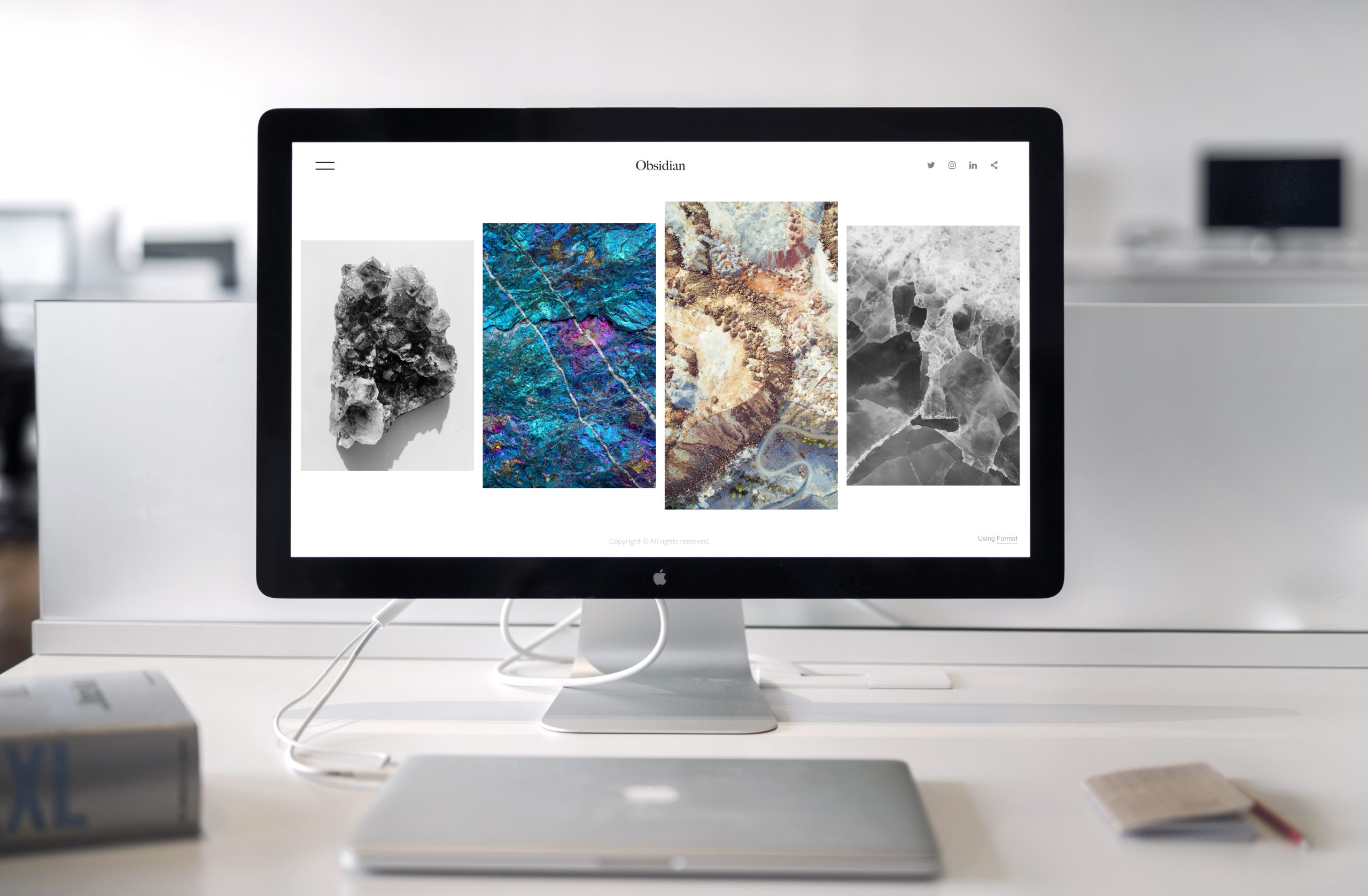Creating an effective and stunning photography website can be daunting. However, with the right knowledge and preparation, it’s possible to create a website that not only looks good but also helps you reach your business goals. In this article, we’ll discuss six tips for designing a stunning photography website. We’ll cover topics such as choosing technology, utilizing white space, creating captivating copy, and more.
Designing a stunning photography website requires a delicate balance between showcasing your work through beautiful and stunning website design while ensuring an intuitive user experience that allows visitors to fully appreciate your portfolio and talent.

Importance of Photography Website
Firstly, having a photography website is crucial for any photographer looking to establish themselves as a professional. It serves as a platform to showcase their work and attract potential clients. A well-designed website with high-quality images and easy navigation can create a lasting impression on visitors and increase the chances of them getting in touch for bookings or collaborations.
Secondly, an attractive photography website can help photographers stand out in their competitive industry. With so many photographers showcasing their work online, it’s essential to have a unique and visually appealing website that reflects the photographer’s brand identity. This can include incorporating colors, fonts, and design elements that align with the photographer’s style and aesthetic.
Lastly, having an organized photography website can make it easier for clients to browse through different galleries or portfolios without feeling overwhelmed. By categorizing photos based on themes or occasions, such as weddings or landscapes, potential clients can find exactly what they’re looking for quickly. Additionally, including information about services offered, pricing packages and booking forms on the website will also make it easier for clients to engage with the photographer.

Tip 1: Visual Appeal
Designing a stunning photography website requires a delicate balance between showcasing your work through beautiful and stunning website design while ensuring an intuitive user experience that allows visitors to fully appreciate your portfolio and talent.
Visual appeal is one of the most important factors that contribute to a stunning photography website. Your goal should be to create an eye-catching design that showcases your work in the best possible way. This can be achieved by incorporating high-quality images, using contrasting colors, and choosing a clean and minimalist layout.
When selecting images for your website, make sure they are high-resolution and of professional quality. To take it a step further, consider applying aesthetic photo editing techniques to enhance the visual appeal and create a unique aesthetic that reflects your brand identity. This will help you showcase your work in the best possible light and give potential clients an idea of what you are capable of producing. Additionally, you can use contrasting colors to draw attention to specific elements of your website such as call-to-action buttons or navigation menus.
Finally, a clean and minimalist layout can go a long way in enhancing the visual appeal of your website. By keeping things simple and uncluttered, you allow visitors to focus on your work rather than being distracted by unnecessary design elements. Remember that less is often more when it comes to designing a stunning photography website!

Tip 2: Easy Navigation
Easy navigation is a crucial element of any website, particularly for photography websites that showcase multiple images. Users should be able to navigate through the site easily and find what they are looking for without getting lost in the process. To achieve this, consider using a clear menu structure with intuitive headings that accurately represent each page’s content.
Another way to improve navigation on your photography website is by using breadcrumbs. Breadcrumbs provide users with an easy-to-follow trail of their progress throughout the site, making it easier for them to return to previous pages if necessary. Additionally, ensure that all links work correctly and lead users to the intended destination. Broken links can be frustrating for users and harm your website’s credibility.
Lastly, mobile responsiveness is vital when it comes to navigation on your photography website. With increasing numbers of people accessing sites from mobile devices, make sure your site can adapt seamlessly to different screen sizes while still maintaining its ease of use and clarity of navigation. This will help you cater to a broader audience and enhance user experience irrespective of how they access your website.

Tip 3: Showcase Your Best Work
One of the most effective ways to showcase your skills as a photographer is to display your best work prominently on your website. Potential clients will want to see examples of your previous projects and what you can offer them, so having a portfolio that highlights your best work is essential. When selecting images for your portfolio, be sure to choose the ones that are not only visually stunning but also demonstrate the breadth of your photographic expertise.
To make sure that visitors to your website do not overlook any of the content in your portfolio, organize it in a logical and easy-to-navigate manner. Consider creating categories such as landscapes, portraits, or still-life shots so that people can easily find what they are looking for. You may also want to include brief descriptions or background information about each image, especially if there is an interesting story behind it.
Remember that showcasing only high-quality work on your website will help you stand out from competitors in a crowded market. Don’t be afraid to take time curating and updating this aspect of your site regularly – after all, it’s one of the primary ways potential clients will judge whether or not they want to hire you!

Tip 4: Include Contact Details
Including contact details on your photography website is crucial for establishing trust with potential clients. Make sure to include a clear and easy-to-find contact page that prominently displays your phone number, email address, and physical address if applicable. You may also want to consider including a contact form that visitors can fill out directly on your website.
In addition to providing important information for clients, including your contact details can also boost your website’s search engine optimization (SEO). By including consistent and accurate contact information throughout your site, search engines will view your business as a legitimate and trustworthy entity, which can improve your rankings in search results.
Lastly, be sure to regularly monitor any contact forms or email inquiries you receive through your website. Promptly responding to potential clients can make all the difference in securing new business and building lasting relationships with customers.

Tip 5: Keep Content Fresh
One key aspect of designing a stunning photography website is to keep the content fresh. This means that you should update your website with new and engaging content on a regular basis. To achieve this, consider creating a blog section on your website where you can share your latest work, as well as industry news and tips for aspiring photographers.
Another way to keep your content fresh is by regularly updating your portfolio section. As you create new projects or take on new clients, make sure to add those images to your online portfolio. Additionally, consider rotating the images in your gallery section so that returning visitors see something different each time they visit.
Finally, don’t be afraid to experiment with different types of content. For example, you could create video tutorials on how to capture stunning photographs, or share behind-the-scenes glimpses into some of your shoots. The key is to provide value and engagement for visitors while keeping the website visually appealing and easy-to-navigate at all times.

Tip 6: Integrate Social Media
When it comes to photography websites, social media integration is an essential element that photographers should capitalize on. Social media platforms such as Facebook, Twitter, and Instagram are powerful tools that can help photography websites gain more exposure and attract a wider audience. Integrating social media icons on your website provides visitors with a quick way to share your content and connect with you on other platforms.
Another benefit of social media integration is that it can significantly boost your website’s SEO ranking. Social signals play a crucial role in search engine algorithms, so having a strong presence on popular social networks can improve your website’s visibility in search results. Plus, sharing your work on social media enables you to showcase your expertise and build credibility in the industry.
In conclusion, integrating social media into your photography website is an effective strategy for gaining more exposure and building a stronger online presence. By making it easy for visitors to connect with you across different platforms while also boosting SEO ranking, social media integration is one tip photographers shouldn’t overlook when designing their stunning photography websites.
Conclusion
In conclusion, designing a stunning photography website requires more than just uploading high-quality images. It involves creating an intuitive user experience that allows visitors to navigate the site with ease and find what they are looking for quickly. Incorporating elements such as clear calls-to-action, easy-to-use navigation menus, and responsive design can go a long way towards achieving this objective.
Another key aspect of designing a successful photography website is ensuring that it is optimized for search engines. This involves optimizing on-page elements such as page titles, meta descriptions, and image alt tags to make them more “search engine friendly.” Additionally, incorporating social media sharing buttons can help increase the visibility of your site across different platforms.
Ultimately, designing a stunning photography website takes time and effort. By following these tips and staying up-to-date with the latest trends in web design and SEO best practices, you can create a beautiful online portfolio that showcases your work while also attracting new clients and opportunities for your business.

